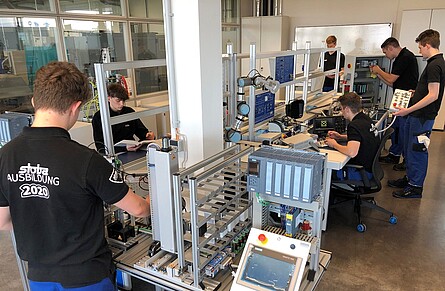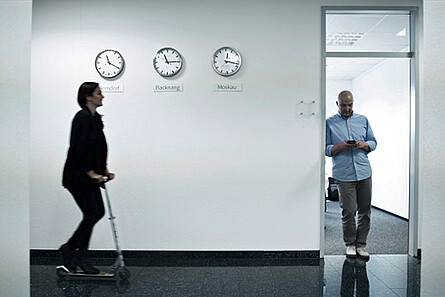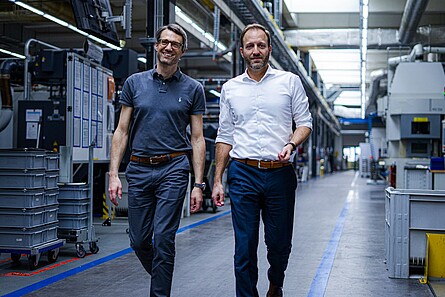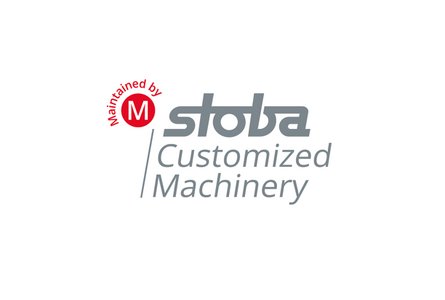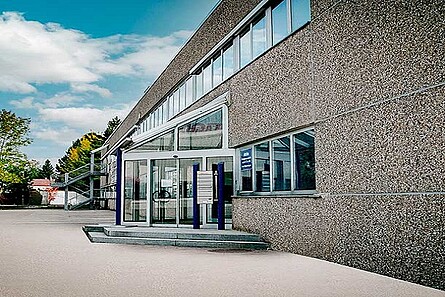Working digitally together
Video calls instead of meetings in the office, a chat message instead of calling over to the office next door, remote maintenance instead of long drives, and on-site service. Just a few years ago, hardly anyone could have imagined that we would work like this. However, that is the way it is today. Given these circumstances, how are we designing cooperation at stoba? The C|X team asked IT.
Get up, turn on the coffee machine, switch on the laptop, start working. This is what the start of the working day looks like for many people. No being stuck in the morning rush hour, no running to the bus because you are late, and no small talk with the colleagues on the way to the office desk. At the latest with the start of the coronavirus pandemic, people around the world are experiencing what it means to no longer do their job from the company’s office but to do it from home, and stoba it is no different.
Although working digitally together has not just been a topic since the pandemic, in Backnang, for instance, technical foundations for mobile work were established in 2018. Company-owned laptops, VPN accesses, digital platforms training, and frameworks for working from home allowed employees back then to work mobile two days a month.
What is it like today?
From an IT perspective, the technical infrastructure is in place, and the digital tools are being used and accepted. “So far, we have only had good experiences with mobile working,” says Steffen Pokel, Department Manager Business Applications in Backnang. This is due, among other things, to the fact that the basic structures for successful virtual collaboration were already in place before they really mattered due to the coronavirus pandemic. Yet a few things have changed since the first days of ‘home office’: “Initially there were questions as to which tasks you could really do from home,” reports Chief Digital Officer Ata Güleryüz. "Today, people think about what they really need to go to the office for."
One observation that shows that much of the virtual collaboration is working well: Applications such as Teams and Sharepoint now make it possible to stay in touch and work efficiently even outside company offices but only if they are used and supported properly.
The advantages of more digital work are obvious. There is more time because there is no commuting, more flexibility in assigning tasks, and a better work-life balance. At the same time, it is exactly these aspects that can become a difficulty: self-organization, constant availability, distraction - and especially lack of contact with colleagues.
The IT department sees it the same way. With the digitization, a big step forward was taken mainly with the introduction of the intranet based on Sharepoint and Teams. The service platform ONE Service now also maps processes from six different areas. “For some topics, you just have to meet at the office and talk in person,” notes Sebastian Altmann, Department Manager IT Infrastructure in Backnang and adds, “As much as we appreciate the digital opportunities, personal contact just can’t be easily replaced.” The IT team in Backnang is trying - where possible and to the extent that health regulations permit - to meet every two weeks on site. Kadir Akyol, Head of IT at stoba e-Systems, has another approach: In Weinstadt, a virtual kitchen was set up on Teams, which the employees can enter at any time to exchange with colleagues as they like. "Onboardings, for example, are still always done on-site at our company.”
A lot of exchange and regular updates
Because there are no short personal exchanges at the office, IT is placing great importance on feedback and regular updates from various departments. That is why digitization processes are shared on Sharepoint and precisely documented through ONE Service. On both platforms, there are designated question and comment features through which feedback can be obtained.
Every month, there is a virtual Backnang IT board meeting with the division leaders where they pass along the feedback of their employees and talk about digitization projects. Steffen Pokel sums it up: “The offer is also well received and we’re thankful for that. Ultimately this is the only way we can develop technical solutions which meet the wishes of the departments.”
Ulrich Schwerin, Authorized Officer of stoba Customized Machinery:
Looking to the future, there is naturally still more to do on the topic of virtual collaboration. “We need to train employees more on the topic of data privacy,” says Kadir Akyol. Support processes among various locations could also be further digitized. “On Teams, employees in production could simply call up colleagues at a location in another country and talk about the problem with the person directly,” explains Ata Güleryüz.
Overall, IT agrees that when it comes to virtual collaboration, stoba is on a very good path in the area of virtual collaboration, if not quite there yet.
Bildquelle: Chris Montgomery
Published June 1st 2021


